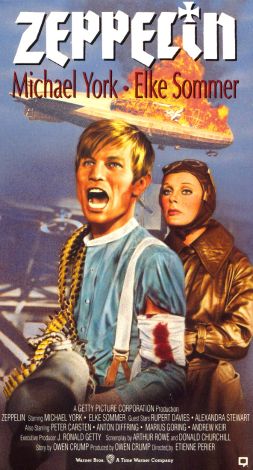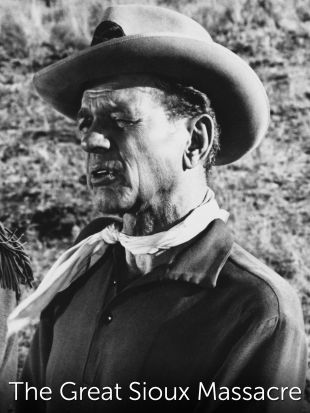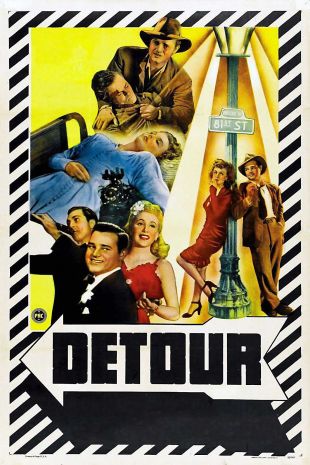Leon Fromkess is one producer who some baby-boomer pop culture buffs genuinely wish were still alive, so that they could thank him -- not only for the B-movies that he produced in conjunction with director Edgar G. Ulmer, and for facilitating the production of Samuel Fuller's The Naked Kiss and Shock Corridor, as well as his contribution to such big-budget Samuel Goldwyn productions as The Best Years of Our Lives, The Bishop's Wife, and Edge of Doom, but also for such television series as Ramar of the Jungle and Fury. Fromkess was a producer who recognized both high quality and unusual scripts, and directors of extraordinary capabilities and attributes, and he also had a keen knack for reaching younger television viewers.
Fromkess was born in New York City and attended Columbia University, which he graduated from in 1922. Like most East Coast film executives, he entered the movie business from the financial side -- Fromkess was one of the business experts who helped put together the initial financing for Columbia Pictures in the 1920s. He formally joined the company in 1929, and his experience at Columbia -- the most under-capitalized of the major studios -- served him in good stead when Fromkess moved to Monogram Pictures, a true Poverty Row studio, in the mid-'30s, where he served as treasurer. In 1942, Fromkess accepted the job of vice president and general manager in charge of production at Producers Releasing Corporation (PRC), a still smaller company organized a couple of years earlier by Sigmund Neufeld and O. Henry Briggs. While Neufeld remained in charge of the studio's Western output, Fromkess took charge of the rest of its production operation and, in conjunction with writer/producer Martin Mooney and directors William Beaudine and Lew Landers, he engineered a dramatic improvement in the studio's output, in quality and inventiveness, and press and distributor response. Fromkess' ace in the hole was Edgar G. Ulmer, an Austrian émigré filmmaker who had gotten a contract at Universal in the mid-'30s only to be cast aside in a personal dispute with the company's president. In the years since, Ulmer had become an expert at the art of making something special in film out of good ideas and very little money. Ulmer's first PRC production was My Son, The Hero, a breezy comedy starring Patsy Kelly, but the director had ambitions far beyond B-comedies. At first, Fromkess resisted Ulmer's attempts to convince him to do Bluebeard, a subject that he'd wanted to shoot since 1934, but Ulmer's success bringing in such movies as Girls in Chains and Isle of Forgotten Sins convinced the producer that it could be done on a modest budget, and might be worthwhile. Bluebeard was so beautiful and complex a film that it represented a milestone in PRC's and Fromkess' history -- although artier than anything that either the studio or the producer usually aimed at, it made money and got good notices, and generally enhanced the company's reputation among exhibitors. In its wake, Fromkess okayed such unusual films as Strange Illusion, Club Havana, and Detour, leaving them in Ulmer's hands, and the results were among the finest (and, today, the most heavily studied) B-movies of the 1940s. One of the ways that Fromkess managed to get so much out of the various parties involved in PRC, despite the budgetary restrictions under which the company operated, grew out of the personal loyalty that he commanded; indeed, few top executives of any studio are spoken of in terms of the warmth with which Fromkess is recalled by some who knew him -- actor-turned-producer James Lydon recalled in 1999 that he had signed a four-movie deal at PRC that included his directing at least one of the four films, and when he was overlooked for the director's spot, he could have sued and won but never considered do it, such was his friendship with Fromkess.
In the wake of PRC's successes, Fromkess suddenly found himself in demand from the majors, and in 1945 he became vice president in charge of production for Samuel Goldwyn Studios. It was in that capacity that Fromkess oversaw the making of The Best Years of Our Lives, The Secret Life of Walter Mitty, The Bishop's Wife, Our Very Own, and Edge of Doom. Any Goldwyn production obviously displayed the taste and interests of Samuel Goldwyn ahead of anyone else, but Fromkess could take credit for making their success possible. By 1951, however, the entertainment world was changing with the growth of television as a popular medium; Fromkess jumped into it as head of the newly formed Television Programs of America, which specialized in the making of filmed series for television, especially children's programming, and, as an associated company, Arrow Productions, through which he was responsible for such beloved series as Ramar of the Jungle and Fury -- which aired for many years in syndication, after ceasing successful production runs -- as well as television adaptations of radio shows such as Halls of Ivy (which was produced and directed by no less a figure than William Cameron Menzies). In 1963, Fromkess returned to theatrical films as the producer of a pair of near-legendary features directed by Samuel Fuller, The Naked Kiss and Shock Corridor. He subsequently went into partnership with J. Ronald Getty as the producer of the chase thriller Flare-up, starring Raquel Welch, the period war drama Zeppelin, and the topical political thriller Rage, starring (and directed by) George C. Scott, before retiring at the outset of the 1970s


